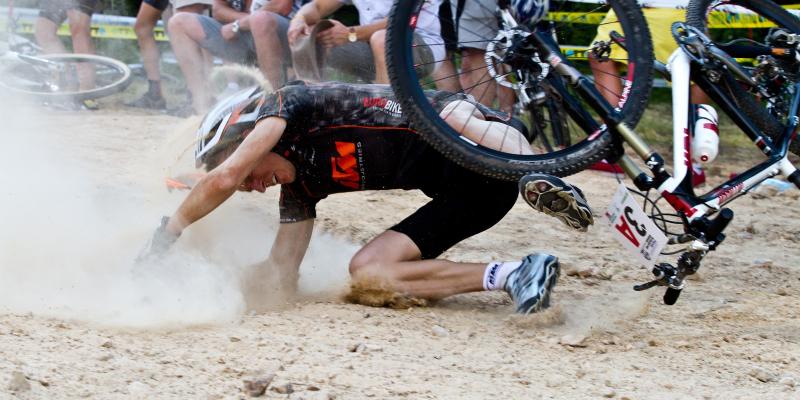All head injuries – even those which look trivial – can seriously affect the brain. The seven-time F1 champion Michael Schumacher sustained a severe brain injury after an unfortunate skiing accident.
Obviously this doesn’t necessarily mean that when a child falls from a bicycle and bumps its head against something, it has suffered from a dangerous brain trauma, especially if it was wearing a helmet. The problem is with mild but repeated head injuries, which might cumulatively lead to brain damage in time.
Heading the ball
This is suggested by studies of footballers’ brains conducted by Michael Lipton from the Albert Einstein College of Medicine. Using a type of an MRI device he demonstrated that heading the ball during football matches can cause some brain damage.
The damage occurs mainly to the frontal, temporal and occipital lobes, which contain areas responsible for memory, attention, and decision-making. People with such lesions diagnosed performed below average in response-time and verbal memory tests.
Fortunately, the safety limits for heading the ball are quite large. Dr. Lipton’s studies show that brain lesions occur after at least 1,000-1,500 contacts with the ball annually. This puts professional players at a much greater risk than amateurs.
Boxer’s dementia
The cumulative effect of frequent mild head injuries is also testified to by post-mortem examinations of other athletes’ brains – mainly hockey and American football players, as well as veterans.
The results were published by the “Brain" journal. It turned out that a brain degenerative disease might develop after many years.
In a study of the brains of 85 people aged 17 to 98, 68 men, or 80% of all study subjects, showed signs of chronic traumatic encephalopathy. It is an incurable brain disease causing problems with memory, focus, as well as depression and dementia. It is also termed “boxer’s dementia", as it is often diagnosed in boxers. It is a threat to all athletes who suffer frequent blows to the head.
Such blows to the head cause the brain to move and hit the walls of the skull, inside which it “floats" in the cerebrospinal fluid. This might result in bleeding, nerve cell damage or swelling, leading to problems with memory and focus, and also headaches.
Liat Ayalon from the Sheb Medical Centre claims that people who have suffered mild traumatic brain injuries are susceptible to disturbances in the wake-sleep cycle, which are often confused with insomnia. The mechanism is not known, however.
With a helmet on your head
Obviously, this does not mean that all and every head injury must have serious consequences. The threat should not be disregarded, however – even mild injuries can be prevented by using helmets.
“The Canadian Medical Association Journal claims that helmets can reduce the risk of brain injury in skiers and snowboarders by 35%, while not increasing the threat of neck injuries.
The risk is also reduced by one-third in cyclists.









Comments (0)